
 |
The Internet's Largest and Fastest Growing Engraving Community
Discuss hand engraving using basic to the most advanced methods and equipment
Forum Members: 14,762. Welcome to our newest member, Katherine
EngravingForum.com -
Domain since Feb 7, 2003
 Graver Video Conferencing is empty Join now!
Graver Video Conferencing is empty Join now!
|
|||||||
| ENGRAVING TOOLS - Paypal accepted | Classes | Glossary | Feedback | Tips | Sharpening | Bulino | Videos | Forum Policies |
 |
|
|
Thread Tools |
|
#1
|
||||
|
||||
|
Chris suggested we start a thread along these lines(no pun intended) over here, so I am throwing some pics up.
Here are some examples of first rate US banknote engravings from my collection which I have scanned for you. Series 1928 George Washington: 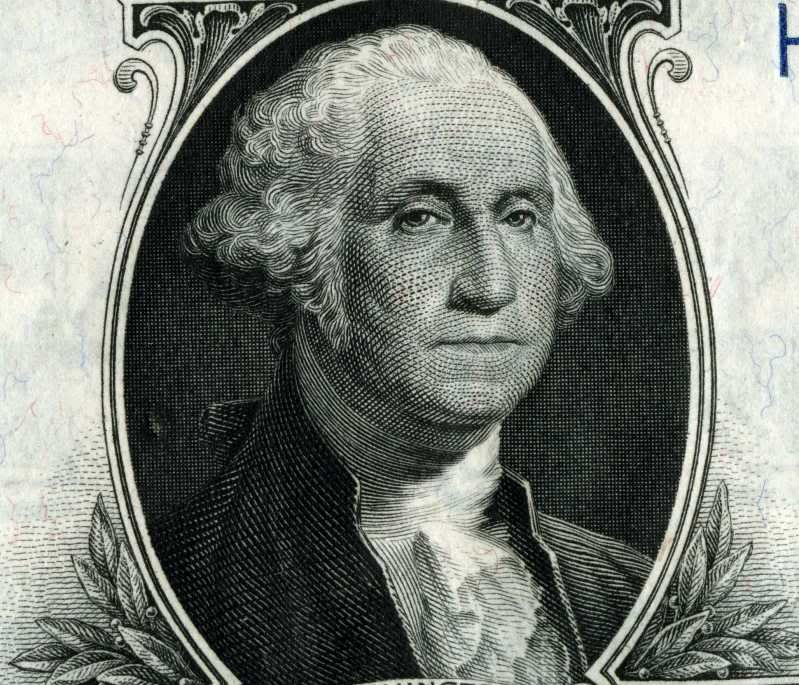 Series 1953 two dollar bill reverse, Monticello:  Bob Swartley etched work, from his Business card : 
__________________
Barry Lee Hands www.barryleehands.com "Critics gather, they discuss aesthetics, Artists gather, they discuss turpentine. . ."- Pablo Picasso |
|
#2
|
||||
|
||||
|
Fantastic Barry, thank-you.
I think this is a great idea to help folks learn the differences between "bank-note" engraving, line engraving for print illustration (intaglio) and, of course, bulino. I have some fantastic examples of of both 19th and 18th Century bank-note and intaglio engraving (respectively). Here's a few to start with .... if they don't first show up, click refresh a couple of times as they are kinda large ![Smile[2]](/images/smilies/top smiles/smile[2].gif) The following is a photo of an actual plate engraved by W.L. Ormsby 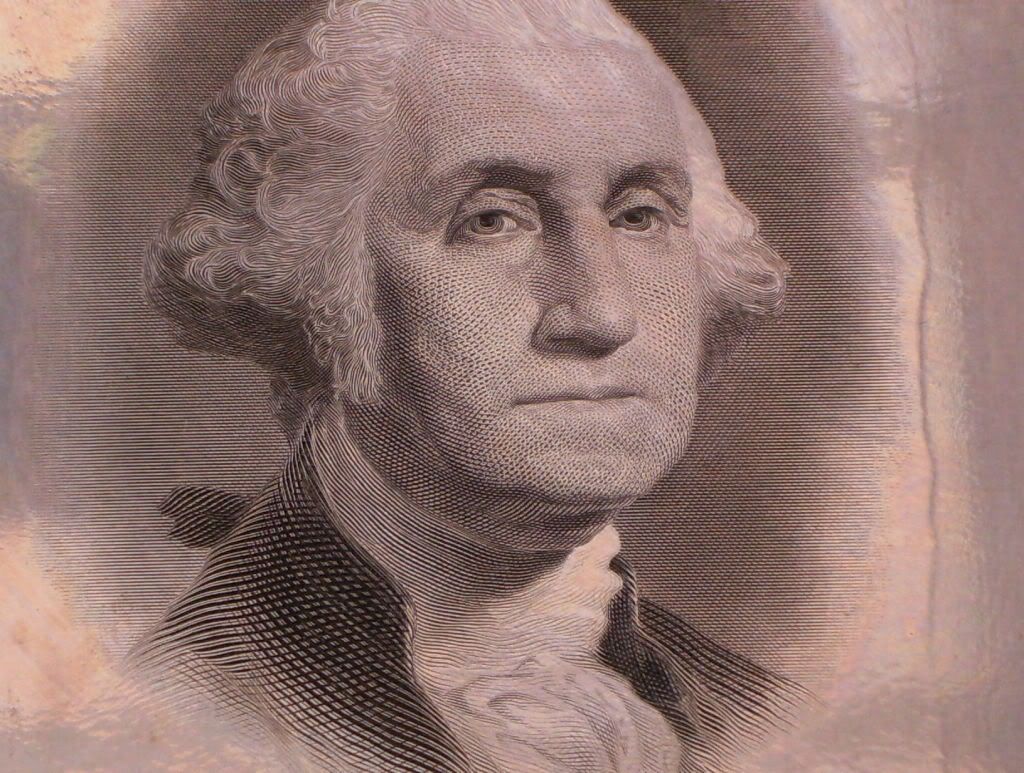 The following vignette is a scope shot of Lady Liberty and a subsequent super close shot revealing acid etching lines, scribe lines and burin cuts. 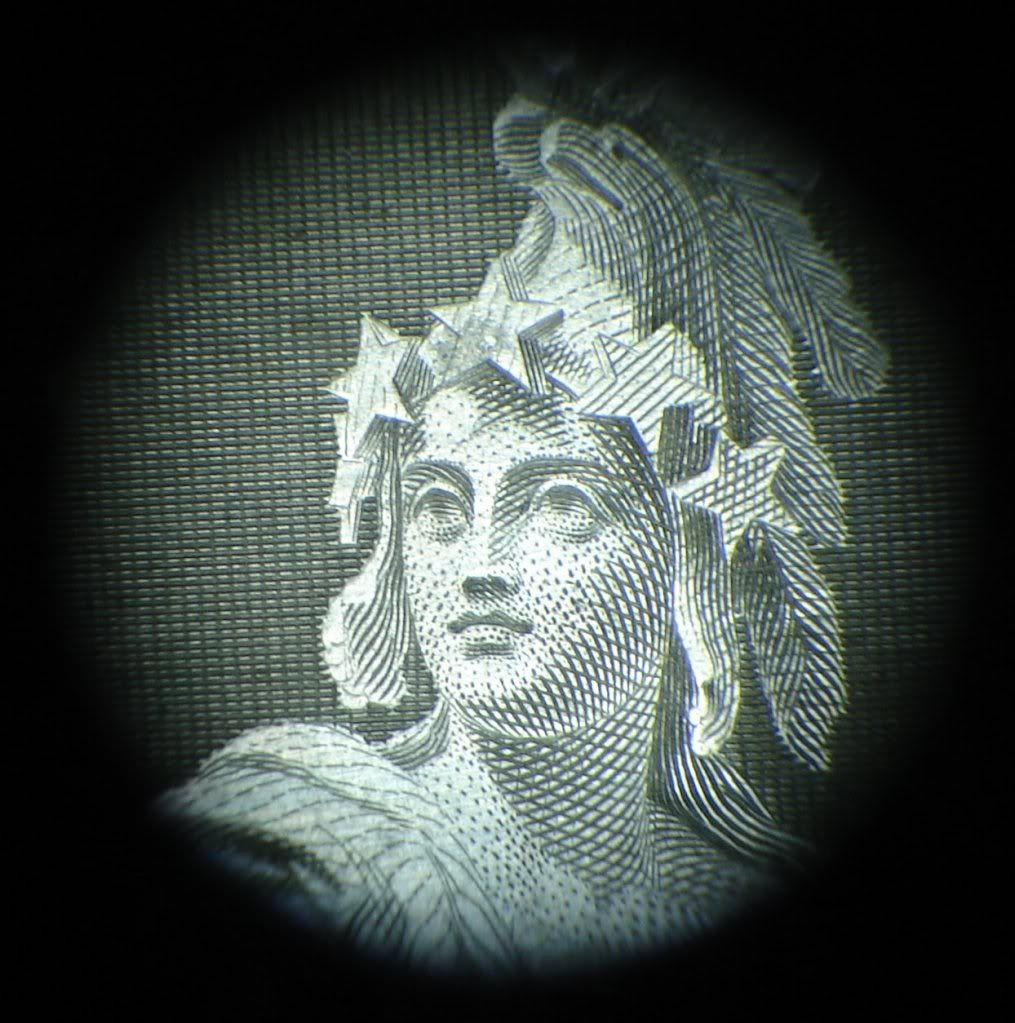 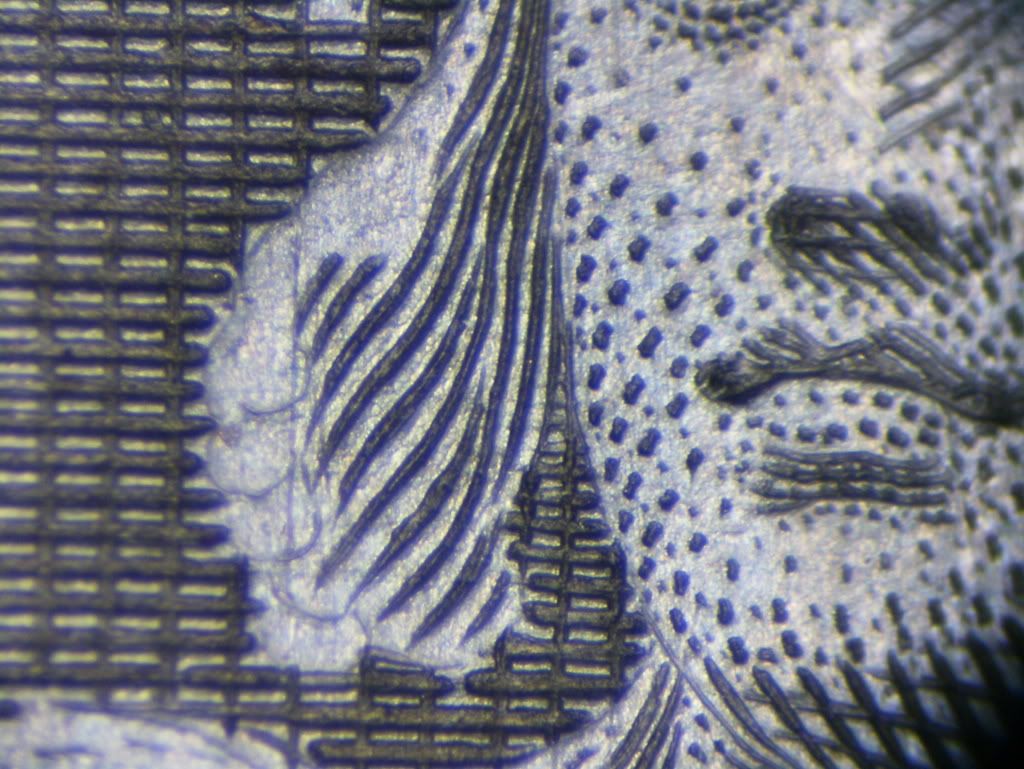 -------------- I will try to dig up some photos of bills that show this vignette ... both United States and Confederate States issue notes. Hopefully Jason (Plat955) can chime in here too as he has a great understanding of the processes used. |
|
#3
|
||||
|
||||
|
Here's another one you won't see anywhere else!!!
This is an acid etched and partially engraved line illustration by William Hogarth done in 1808. It's a great example of how these great engravers began the actual hand cutting of their illustrations. William Hogarth's illustrations were done in copper plate as it was some time before refinements in steel were made where steel could be successfully used in the printing process. As lines are cut, prints are pulled to proof the work. The acid etching process was a lengthy process to transfer images that us modern day engravers can substitute with a scanner, printer and transfer solution. 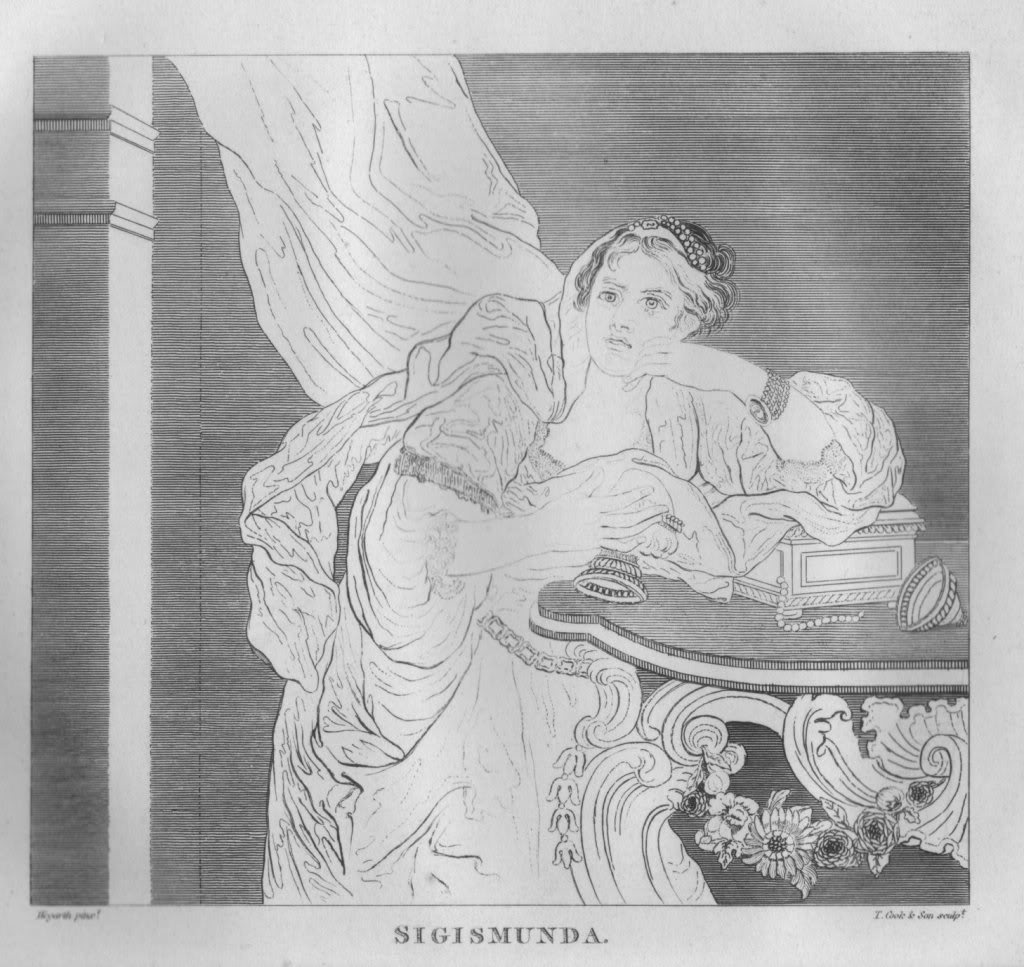 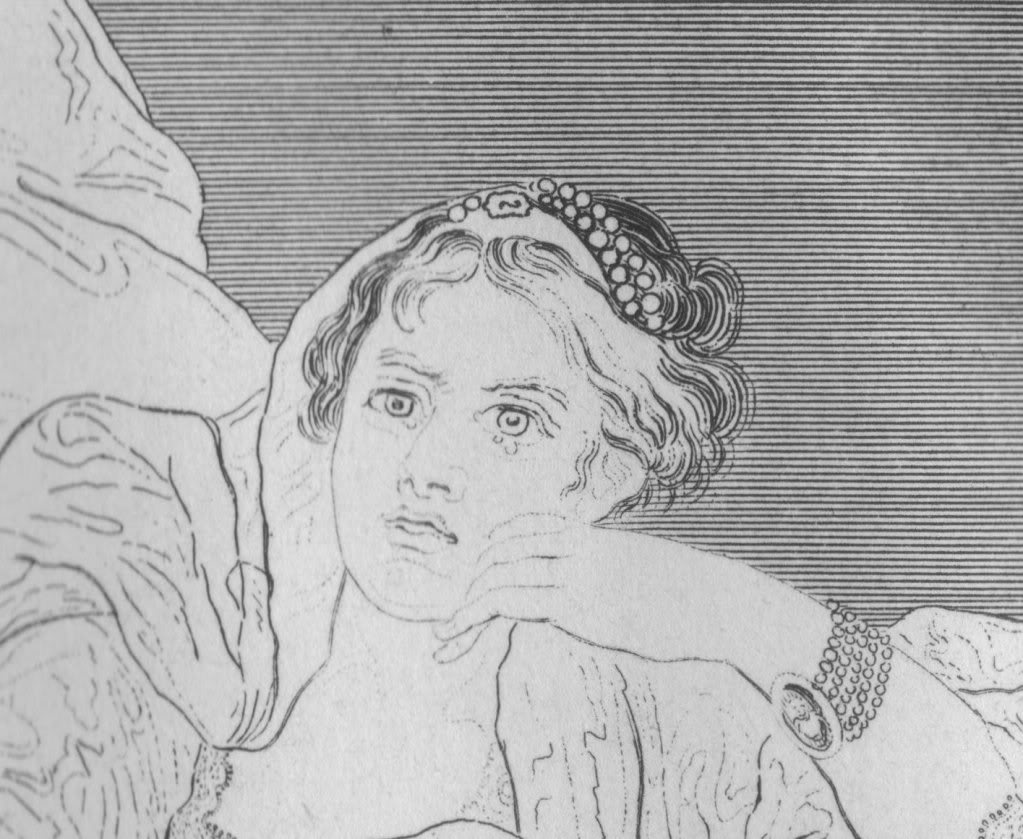
|
|
#4
|
||||
|
||||
|
Good stuff Chris, on that second shot of lady liberty you can really see the etched lines, with circular termination, as in the ruled field, and the cut lines with pointed or "tail" termination as on the hair, would you agree?
__________________
Barry Lee Hands www.barryleehands.com "Critics gather, they discuss aesthetics, Artists gather, they discuss turpentine. . ."- Pablo Picasso |
|
#5
|
||||
|
||||
|
I agree completely. Notice, however, that some of the lines in the ruled background do have a "pointed termination" which leads me to believe that some of those lines were cut (and back cut) to either deepen them or true them.
|
|
#6
|
||||
|
||||
|
I am pleasantly suprised you know about the etch transfer technique, It was taught to me by Bob Swartley and I still use the etch transfer process some of the time.
After scribing and etching a "pattern plate" It allows the inked layout to be picked up on a piece of clear tape for ease of locating the bird or animal on the steel. a side benifit is you have the pattern plate for future reference. I thought there are only a few of us old timers that have learned that. Hehe...Do you use it in your work?
__________________
Barry Lee Hands www.barryleehands.com "Critics gather, they discuss aesthetics, Artists gather, they discuss turpentine. . ."- Pablo Picasso |
|
#7
|
||||
|
||||
|
I have a feeling I'm being quizzed Barry
![Smile[2]](/images/smilies/top smiles/smile[2].gif) I simply have a passion to learn to the old ways. Tape? That's another luxury of "transfer" we have today which I completely forgot. You should be able to etch multiple plates using the same transfer method ... that is, the same scribed intermediary. Remember, those guys (back in the day) did not have tape and they threw away or polished off plates all the time. "Am I using this in my work?" ..... yes, I will be using this on two projects I have in the works now. The first project is to convert one of Gustave Dore's woodcuts to a steel line engraving. I'll probably use a simple modern transfer method that we have today to lift the image from a practice plate after I've redefined the contour lines and shade rules. The second is for original artwork for 5 scenes on a '73 Winchester. I want the quality of durable engraving that I see in these plates ... and I will get it. ---- By the way Barry ... were you referring to "step-etching"? If so, I don't see how that that was used on these plates. ie: it appears as though it was either etched or hit with a graver (or both). Here's some extra-curricular reading .... published in 1907. The first few pages and those pertaining to "etching ground" are particularly enlightening. Enjoy folks!! http://ia360921.us.archive.org/1/ite...hing00lipp.pdf |
|
#8
|
|||
|
|||
|
Barry and Chris , what a fantastic tread , very good ,, Bank note engraving has always been a passion of mine . i collect the old large U S bank notes and study them , there was some fantastic work on thas old notes .. but i never have tried it ,, keep this tread going ,great info here from both of you guys .. thanks again .. ron p
|
|
#9
|
||||
|
||||
|
http://www.inkart.com/Monk/index.htmlhere a beautiful link to understand the method
__________________
http://rbaptiste.com |
|
#10
|
||||
|
||||
|
Thanks to everyone for all the good stuff on this fascinating subject.
Chris I hope I dont sound like I am quizzing too much, I guess I read too much Plato, and it affects my mind, hehe. We have made some similar observations independantly, I hope we can examine some plates together sometime. Roland, scratch board is an excellent fast technique for newspaper printing, the Wall Street Jorurnal was using it till just a few years ago. Before moving on to grounds, I should expand upon some common etching transfer methods of the past. In the old days instead of tape one would use a very thin sheet of waxed paper, or waxed parchment ,gelatin or acetate to accomplish the same thing as a tape transfer. The layout plate was sketched, grounded with a thin layer of ground, the pattern was scribed or etched, inked and then picked up on the thin, clear paper, and transfered. This way one could see through the transfer media. Today we would perhaps use clear packing tape, but the old methods still work. In my experience copper or steel makes little difference to the engraver. The steel plates of course are much better for the printer, because they last longer. The acids can be increased in strength by boiling to condense them, or increasing the time or the temp of the etch bath. there are three base materials for ground that I have used, beeswax , asphaltum and parafin. All three will disolve in alcohol or solvent, the trick is using different bases with different solvents, to achieve a "base ground" and a "stop out ground" Asphaltum ground is solvent, or turpentine based usually. Often it contains added beeswax. Beeswax or Parafin ground can be alcohol based and used over the asphaltum ground as a "stop out" ground to block areas out, so one can have lighter and darker etches over differing areas. The important thing in stopping out is the solvent as the alcohol based ground will not damage a well set up solvent ground when properly done. Stopping out is a key technique in most of the true " Banknote" scenes. After we wear out the "banknote" subject, which is a commercial process we can move on to the "painter etcher movement" which has a lot of parallels to the " Postmodern Romance engraving movement" which is a phrase I coined for the movement that we on this forum are all participating in. Has anyone read "Etched in Memory" by Lang and Lang?
__________________
Barry Lee Hands www.barryleehands.com "Critics gather, they discuss aesthetics, Artists gather, they discuss turpentine. . ."- Pablo Picasso |
|
#11
|
||||
|
||||
|
Thank-you Barry for the explanation.
No ... I was just kidding about being quizzed ![Lol[1]](/images/smilies/top smiles/lol[1].gif) I'm pretty sure that you've figured out the extent of my self-learned experience rather quickly. It's not much I'm pretty sure that you've figured out the extent of my self-learned experience rather quickly. It's not much ![Lol[1]](/images/smilies/top smiles/lol[1].gif) The transfer method is one of the other things that was told to me before. As this is all study and no practice for me, I hadn't thought about tape. The image/photograph/painting is scribed into the gelatin so that it pushes a raised line through the back. The back is dusted and then it is dropped onto the plate where the tacky ground picks up the powder. After it is lifted off, the lines transferred with the powder are scribed, backgrounds are ruling machine scribed as well. Distances between lines are calculated based on pre-determined measurements to achieve specific levels of gray. |
|
#12
|
||||
|
||||
|
You are very modest Chris, I think you have an excellent foundation for the study of this amazing technique. I hope my additions will help you understand some techniques better and help you in your quest for more knowledge.
__________________
Barry Lee Hands www.barryleehands.com "Critics gather, they discuss aesthetics, Artists gather, they discuss turpentine. . ."- Pablo Picasso |
|
#13
|
||||
|
||||
|
It would definitely be a great benefit to learn through your experience. It is a fascinating process indeed.
The acid etching step is an important step because it creates the ultra soft lines and super light grays that the human hand and graver can not achieve. That is illustrated in both the Lady Liberty scope shot and the Hogarth, partially engraved, acid etch. In the bank note and securities industry, acid etching had an even more important role and that was "security". Bank-note engraving for decorative purposes ... as I will be attempting with the Gustave Dore' woodcut conversion, there's no need to acid etch. The key word is "decorative". After tracing the main lines to be scribed onto a transparency, I'll scan that in and resize. Then re-print onto a transparency and transfer to steel. Scribe then cut. I can learn the hand engraving techniques and achieve a comparable level of quality and detail. I thought I would mention this because the actual process is intimidating and very time consuming. By simplifying it to use transparencies, anyone can set out to try it. |
|
#14
|
|||
|
|||
|
This is a fascinating thread although my knowledge of priinting processes is minimal, and I do not know much of the terminology.
I have looked at banknote engraving printed on various currency under a scientific microscope and it is cool. Learning about the evolution of engraving techniques is really interesting. Thanks guys, Peter |
|
#15
|
||||
|
||||
|
Barry & Chris
![Thankyou[1]](/images/smilies/top smiles/thankyou[1].gif) More More, so much to learn so little time. More More, so much to learn so little time.![Cheers2[1]](/images/smilies/top smiles/cheers2[1].gif) Dave Dave? for Barry can doping wax be disolved and used as a resist, thanks again Dave Last edited by Dave London; 05-05-2009 at 06:02 PM. Reason: ? |
|
#16
|
||||
|
||||
|
Wow very cool thread! Chris and Barry you guys rock! and I have to add that your info is well said and spot on. I'll try to add to what you've already covered.
I actually just ordered a proofing press to do some banknote type printing art, and planned on eventually doing a tutorial on the process. The first thing most people should know is the difference between banknote and intaglio engraving. Banknote engraving is a very controlled, strict process as compared to intaglio. -first characteristic of banknote engraving is the absence of individual style which is trained out of the engraver over their 10yr apprenticeship. -second is the use of a tint rule. This is a ruler essentially that is hand made by each engraver during their apprenticeship that gives them their guide to line spacing. (Which is also a part of security). Note: these are two main reasons that everything you examine even though is done by different engravers. Will all look almost identical. And of course each are repeating the same process in the same steps. There is soooooo much info on this subject it is going to take a bit to get it out.... ![Biggrin[1]](/images/smilies/top smiles/biggrin[1].gif)
|
|
#17
|
||||
|
||||
|
Here is a banknote style train I did. It is from a 19th century postage stamp. .
 Here a pic of a practice plate I engraved  P.S. No airgraver or scope when I was studying this(the practice plate). A 3x lense and a square graver |
|
#18
|
||||
|
||||
|
Here is a copper plate I am curently working on:
 Note: the fuzzy lines are tarnish. |
|
#19
|
|||
|
|||
|
hey platt 995.. you have to sop by the Allentown show this week end so we can talk .. that stuff just fanastate me to no end , i always wanted to learn bank note engraving , i study the large U S bank note often to see how they do it .. i always wondered what type of chisel they used , i thought it was an onlet .. ron p
|
|
#20
|
||||
|
||||
|
1 http://handengravingforum.com/showth...ghlight=ormsby
2 http://handengravingforum.com/showth...ghlight=ormsby 3 http://handengravingforum.com/showthread.php?t=2821 4 http://handengravingforum.com/showthread.php?t=2822 I thought I should transfer these over to here. |
|
#21
|
||||
|
||||
|
Hey Ron. Thank you.
I cannot make it this weekend to the Allentown Gun Show, but you are welcome to come to my shop anytime. Jason |
|
#22
|
||||
|
||||
|
Please go on gentlemen, I have almost exhausted my meager body of knowledge on the subject, hehe
__________________
Barry Lee Hands www.barryleehands.com "Critics gather, they discuss aesthetics, Artists gather, they discuss turpentine. . ."- Pablo Picasso |
|
#23
|
||||
|
||||
|
Dude, I did't meant to high jack your guys thread... I just got excited...LOL Honestly, Barry and Chris your posts are probably the only accurate posts on banknote engraving I've ever come across.
Cheers and ![Thankyou[1]](/images/smilies/top smiles/thankyou[1].gif) ![Thumb[1]](/images/smilies/top smiles/thumb[1].gif)
|
|
#24
|
||||
|
||||
|
Oh P.S.
For those of you that are serious about learning about banknote engraving. Steve Lindsay has some killer mid to late 1800's banknote plates for sale and from what I've seen they are a steal. |
|
#25
|
||||
|
||||
|
ok, Barry's gone .... sooooo what do we do now?
 ------- Just funnin ![Smile[2]](/images/smilies/top smiles/smile[2].gif) .... I'll dig up some cool photos tomorrow Jason. Fantastic work and I look forward to continuing this discussion. .... I'll dig up some cool photos tomorrow Jason. Fantastic work and I look forward to continuing this discussion.
|
|
#26
|
||||
|
||||
|
And I'm looking forward to following it!
Picking up lots of fascinationg information from this thread. |
|
#27
|
|||
|
|||
|
Tanks Barry and Chris this is wonderfull study material and good education.
Cheers "VAN" |
|
#28
|
|||
|
|||
|
hi Jason .. sorry to hear that you cant make the show , i would of like to pick your brain about bank note ,, that ship looks just fantastic , i think i can do it all i need to know is what type of chisels you use ..i do study the old bank note that i collect and i even look at them under the scope to see how they cut the lines ron p
|
|
#29
|
||||
|
||||
|
Getting back to our old discussion ... and some history ..... The level of quality is amazingly consistent throughout the American Bank Note Company. Vignettes are not unique to one particular bill and are re-used throughout history.
A photo of a plate engraved with "Industry and Agriculture" by the Continental Bank Note Company in the 1850s. 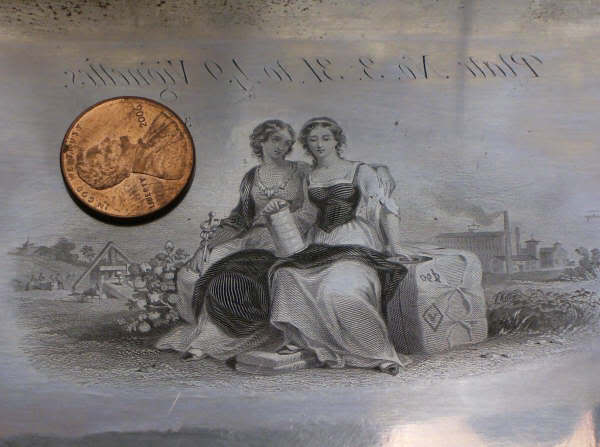 A Confederate T6 bill engraved by the Southern Bank Note Company which was officially an office of the American Bank Note Company (and previously the Continental Bank Note Co). The SBNC severed ties with its' New York based company as the Union declared anyone producing currency for the Confederacy to be guilty of treason. Bills produced by the Southern Bank Note Company are particularly valued because of their high level of quality not found in other Confederate notes. In 1862, the SBNC was closed shortly before New Orleans fell.  The photo of the plate engraved by W.L. Ormsby of George Washington (in the 1850s) previously posted ....  1863 United States fractional currency featuring the same vignette (from my collection) 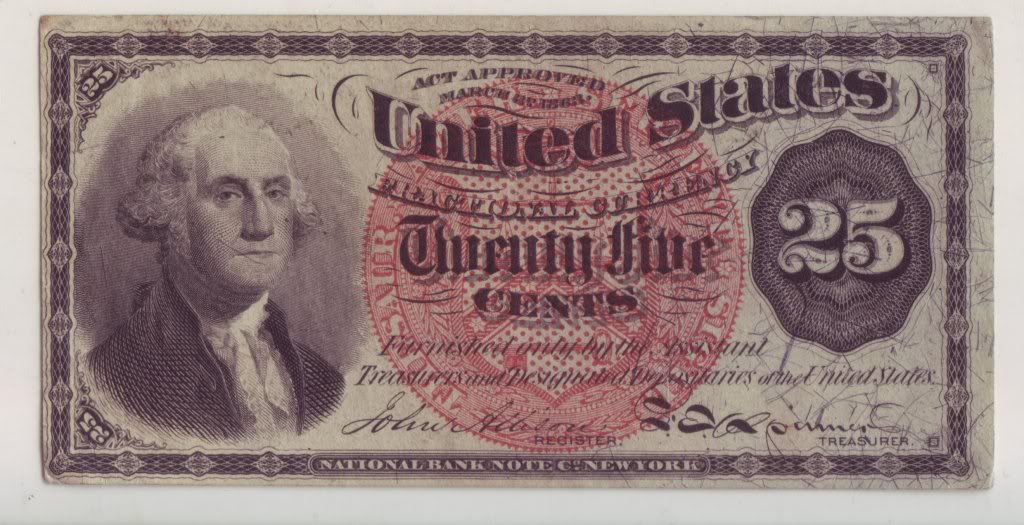 A Confederate T8 bill produced after the Southern Bank Note Office in New Orleans was closed and relocated to Richmond, VA. Notice the familiar vignettes but poorer quality. 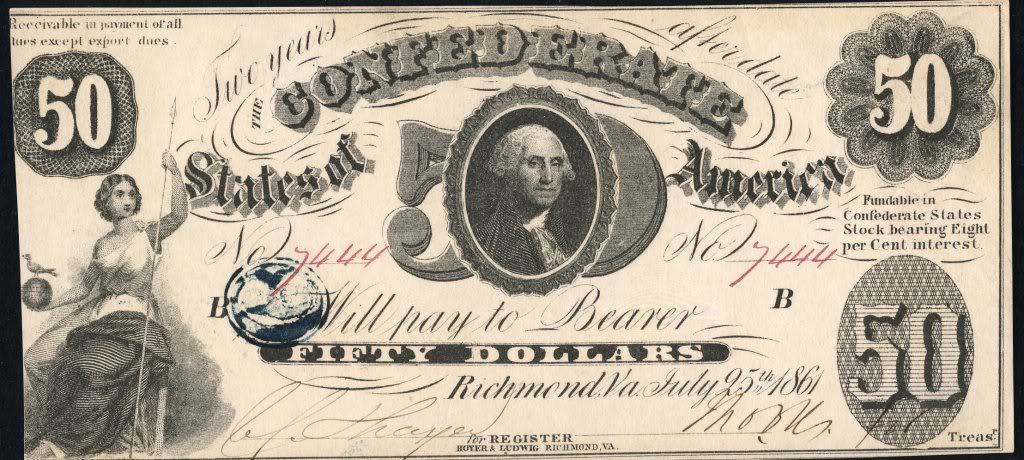
|
|
#30
|
|||
|
|||
|
Wonderful thread!
Recently studying a magazine of art from the 1860s I am wondering how they reproduced the paintings to engravings for print with such accuracy to proportion? |
|
#31
|
|||
|
|||
|
The Ormsby portrait is a great piece of work. One thing you guys over the pond did well was lettering, just take a moment and look at it esp the 25 cent and top 50 dollar notes.
|
|
#32
|
|||
|
|||
|
Chris,
I tried the link you posted for the usarchive. It failed to download with an error message that there is a problem with the document. Is there some computer secret handshake that I need to use. Tried it on 2 different computers without any luck. Thank you |
|
#33
|
||||
|
||||
|
Hi Gimp ... I just tried it and it works. It's on Archive.org. You can always go there directly and search on the title. There's a ton of old books on engraving on that site. Enough to keep you busy for days - it has for me.
![Pop2[1]](/images/smilies/top smiles/pop2[1].gif)
|
|
#34
|
||||
|
||||
|
These photos are very nice ...
|
 |
| Bookmarks |
|
|